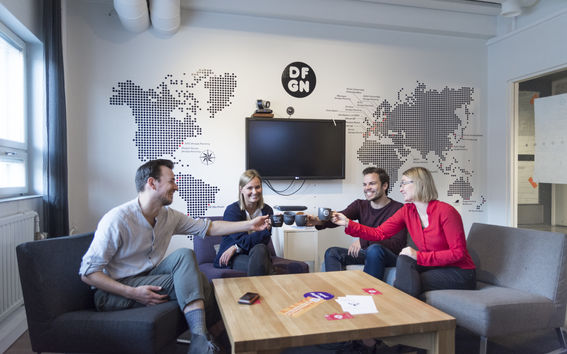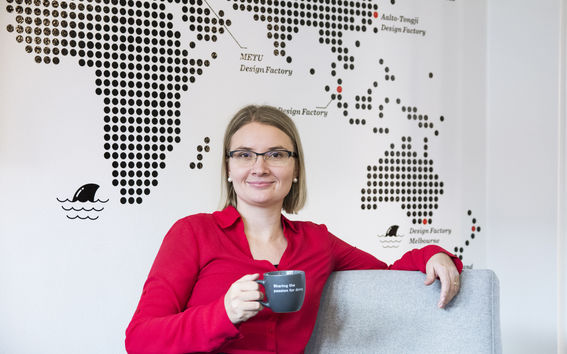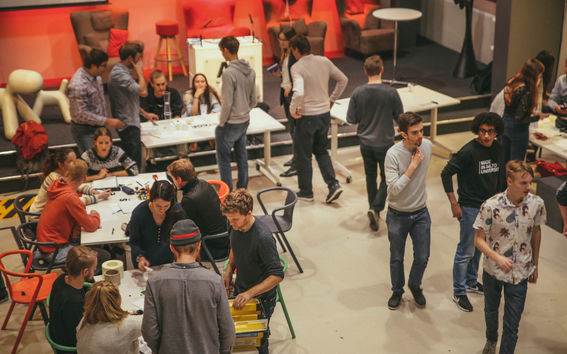At ten years old, Design Factory is yet to make itself obsolete

The world’s first Design Factory has its roots in 2007, a small room at the end of a machine shop in what was then Helsinki University of Technology. Today, Design Factory serves as a learning and research environment for dozens of courses, projects and companies as well as the coordinator for a global network of Design Factories located within 24 universities and research institutions.
The aim, however, remains unchanged:
’We try to break down barriers of all kinds: between disciplines and schools, but also between the university, companies and society,’ says Professor of Practice Tua Björklund, who has been a part of the Design Factory team since the beginning.
The father of the concept is Professor Kalevi Ekman, who has been running PdP, a multidislipnary product development course, since the end of the 1990s. The need for a new type of learning environment emerged from the practicalities of that course: What kind of space could unite people from different backgrounds? Which resources are needed to create new innovations?
Aalto University ran into the same questions when it was in its planning stages.
’When people started talking about a merger of three universities, Design Factory served as a prototype of sorts for Aalto University. It was a window into how collaboration might function in a multidisciplinary university,’ Björklund says.
Working together – an international recipe for success
Since its founding, Aalto Design Factory has held a prominent role as a supporter and sparring partner of teaching at Aalto University by developing multidisciplinary, project-based studies.
‘Our aim is to bring students, researchers, teachers and entrepreneurs to the same table and to create an environment where they can most easily work together. The main idea of co-creation is to not only talk, but to create something concrete together as soon as possible,’ Tua Björklund says.

Professor of practice Tua Björklund.
Design Factory has strengthened Aalto University’s ties to the business world and strives to make companies active participants in courses. Courses and research projects have also resulted in start-up companies being created within Design Factory.
Research serves education at Design Factory – and vice versa. Research projects study questions such as which skills are needed for co-creation and what is the best way to learn those skills.
’In addition to studying the Design Factory ecosystem, we aim to create hard science on product development and co-creation, meaning that we also study large technology companies and design firms, for example. All the knowledge we produce can be applied to developing our environment, but to truly understand these phenomena, we must look beyond our own backyard,’ Björklund explains.
The first Design Factory outside Aalto University was founded at Tongji University in Shanghai in 2010. Since then, new ones have sprung up in more than twenty countries. Design Factory Global Network was officially formed at the beginning of this year. The network’s members have joint courses in which students participate from all over the world.
Each Design Factory is different from the others, but they share in common a desire to change the familiar practices of their home organisations. Björklund believes that the recipe has found success around the globe because the network offers not only mobility and international collaboration, but also peer support and inspiration for the difficult work of changing organisations.
’Our points of departure vary a lot. For example, co-operation between students and businesses is an entirely new idea in some countries.’

PdP product development project brings together students and companies from many different fields. Photo from PdP Mystery Night -event 2017. Photo: George Atanassov.
The need for an experimental sandbox remains
In ten years, much has changed both in Design Factory and in its operating environment.
Multidisciplinary collaboration and a bold culture of experimentation have taken root in Aalto University. Many new players have also stepped onto the field of innovation and corporate co-operation, such as Startup Sauna, Aalto Ventures Program and A Grid. What will Design Factory be needed for in the future
’I would be happy to see us make ourselves obsolete. Project-based multidisciplinary courses are now common in Aalto University, but I think there’s still going to be a need for a sandbox with a low barrier to entry for trying new things. We get to try out ever more advanced forms of learning together,’ Tua Björklund says.
According to Björklund, one of Design Factory’s central goals is to create societal impact.
‘We already have strong industry ties, but this is the time to develop new forms of co-creation and relationships with societal actors and organisations.’
Aalto Design Factory also has an important role to play in leading the Design Factory Global Network and reinforcing co-operation between its members. One example of a new way of working together is the Rat Relay for Global Good hackathon, in which members of the network take turns working on a shared development challenge, passing work along as a relay between countries.
This year, Design Factory has also celebrated the installation of two new professors of practice: Björklund was appointed to the field of human-centred engineering and Maria Clavert is the first professor of practice in technology education in Finland. Both are working to make Aalto University a better environment for collaboration breaking boundaries between scientific disciplines.
’Human-centredness is a cornerstone of successful development. Whether you’re an engineer, an economist or a designer, advancing new ideas forward requires an understanding of how to get others to participate in the development process and to make use of solutions. If you’re planning to be a game changer, your tools have to include people,’ Tua Björklund says.
Design Factory celebrates its 10th anniversary 4–5 October.
Read more news

Get to know us: Associate Professor Maria Sammalkorpi
Sammalkorpi received her doctorate from Helsinki University of Technology 2004. After her defence, she has worked as a researcher at the Universities of Princeton, Yale and Aalto.
A! Walk-Nature connection: Walk, pick, discuss
The afternoon adventure on Lehtisaari offered more than just a walk in the forest; it sparked conversations about renewed appreciation for the simple pleasures of life and the beauty of the Finnish wilderness...
Aalto computer scientists in ICML 2024
Computer scientists in ICML 2024